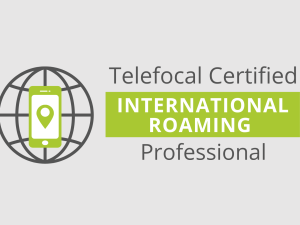SS7, SigTRAN and SIP Security

Course Overview
This course is designed to provide participants with a comprehensive understanding of SS7, SIGTRAN, and SIP security protocols. The course will cover the fundamental principles of Signaling System 7 (SS7), SIGTRAN, and Session Initiation Protocol (SIP), as well as the common vulnerabilities and attacks associated with these protocols. Participants will learn how to identify and mitigate potential security risks associated with SS7, SIGTRAN, and SIP, and will gain practical experience through hands-on exercises and case studies.
Target Audience
The course is intended for experienced network engineers, network tuning staff and anyone with network experience, who needs in depth technical knowledge on functionality of GSM signaling.
Duration & Training Format
- Classroom: 3 days
- LIVE Virtual: 21 hours
*Note:
- A minimum of 8 or more participants is required for a Classroom session to commence.
- A minimum of 6 or more participants is required for a LIVE Virtual session to commence.
- LIVE Virtual courses can be conducted for 5 hours or 7 hours daily. Please note that the number of training days will be extended if you opt for 5 hours daily.
Upcoming Course Dates
There are no upcoming schedules for this course. If you are keen on attending this training, please register your interest via our course enquiry form for us to open a new schedule for this course.
Course Objectives
At the end of the course, participants will be able to:
- Understand GSM/UMTS network on a system-wide level
- Describe the functionality of the SS7-SIGTRAN network in the GSM/UMTS/LTE environment
- Describe the message routing on MTP and SCCP levels
- Explain the most popular SIGTRAN User Adaptation Layers: MTP3 User Adaptation (M3UA) and SCCP User Adaptation (SUA)
- Understand and explain the Stream Control Transmission Protocol (SCTP)
- Describe signaling procedures for the different protocol levels (SS7/SIP/Diameter)
- Identify and analyze the common vulnerabilities and attacks associated with SS7, SIGTRAN, and SIP
- Implement security mechanisms and protocols to mitigate potential security risks associated with SS7, SIGTRAN, and SIP
- Explain the nature of SS7, SIGTRAN, and SIP security attacks and cite examples of these attacks
Course Outline
- SS7 Basics
- Introduction to SS7 Networks
- SS7 Network Architecture
- SS7 Protocols
- SS7 Entry Points
- The SIGTran: User Adaptation Layers
- Filtering Approaches and Their Effectiveness
- MAP Specific Node Protection
- STP (Signaling Transfer Point)
- HLR
- VLR/MSC and SGSN
- GGSN
- SCCP Protection
- SMS Protection
- ISUP Protection
- The SIG TRAN
- SCTP
- M3UA
- Diameter
- Diameter Presentation
- Diameter Interconnect Security (Focus Area)
- SIP
- SIP Messages
- SIP Network Security
- Attack Examples and Illustrations
- Location Tracking
- Using AnyTimeInterrogation Command
- Using SendRoutingInfoForSM Command
- Other Commands used for Location Tracking
- Commands used to “Displace/Disconnect the Subscriber”
- Commands used to Trace the State of the Subscriber
- Charging Related Attacks
- Upgrade Pre-Paid to post-paid Attack (Change of Subscriber Profile)
- Eavesdropping and Call Interception
- Call Forwarding
- Eavesdropping
- SMS Interception
- Data Attacks
- Disclosure of Subscriber Data
- DoS against Subscriber(s)
- Data Access on Other Subscribers’ Plan (Fraud)
- Data Interception
- ISUP Attacks
- SIP Attacks
Note: A Certificate of Completion will only be issued upon achieving at least 75% attendance for the course.
Pre-requisites
- Participants should have some background in GSM/UTMS/LTE and wireless technology.



